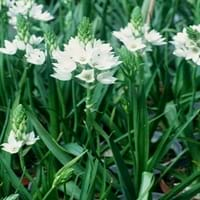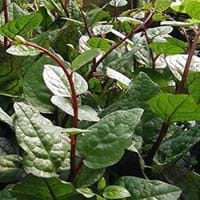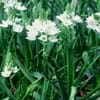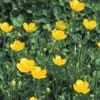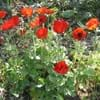Life Span
Perennial
Perennial
Type
Bulb or Corm or Tuber
Vegetable
Origin
Southern Africa, South Africa
Southeastern Asia, India
Types
not available
Basella rubra, L.Basella oleracea, Landw.Basella lucida, L.Basella japonica, Burm.f.Basella cordifolia,
Number of Varieties
Not Available
Habitat
marshes, Sandy flats, Slopes
gardens
USDA Hardiness Zone
7-10
Not Available
Sunset Zone
21,22
H1, H2, 3a, 3b, 4, 5, 6, 7, 8, 9, 10, 11, 12, 13, 14, 15, 16, 17, 18, 19, 20, 21, 22, 23, 24
Habit
Clump-Forming
Vining/Climbing
Minimum Width
Not Available
Flower Color
Orange, Gold
White, Pink, Light Pink
Flower Color Modifier
Bicolor
Bicolor
Fruit Color
Not Available
Purple, Black
Leaf Color in Spring
Green, Blue Green, Yellow green
Green, Light Green
Leaf Color in Summer
Light Green
Green, Dark Green
Leaf Color in Fall
Several shades of Green
Green, Dark Green
Leaf Color in Winter
Light Green
Green, Dark Green
Leaf Shape
Succulent
Round
Plant Season
Spring, Winter
Spring, Summer, Fall, Winter
Sunlight
Full Sun, Partial Sun, Partial shade
Full Sun, Partial Sun
Growth Rate
Not Available
Fast
Type of Soil
Clay, Loam, Sand
Clay, Loam
The pH of Soil
Acidic, Neutral, Alkaline
Neutral
Soil Drainage
Well drained
Well drained
Bloom Time
Early Spring, Spring, Winter, Late Winter
Indeterminate
Tolerances
Drought
Drought
Where to Plant?
Container, Ground
Ground, Pot
How to Plant?
Bulbs, Seedlings
Seedlings
Plant Maintenance
Medium
Medium
Watering Requirements
Keep ground moist, Reduce watering in winter, Water three times weekly in summer
Keep ground moist, Requires watering in the growing season, Water Deeply, Water less during winter
In Summer
Lots of watering
Lots of watering
In Spring
Moderate
Moderate
In Winter
Average Water
Average Water
Soil pH
Acidic, Neutral, Alkaline
Neutral
Soil Type
Clay, Loam, Sand
Clay, Loam
Soil Drainage Capacity
Well drained
Well drained
Sun Exposure
Full Sun, Partial Sun, Partial shade
Full Sun, Partial Sun
Pruning
Prune to control growth, prune to control shape, Prune to stimulate growth
Remove dead leaves, Remove dead or diseased plant parts, Requires very little pruning
Fertilizers
All-Purpose Liquid Fertilizer
All-Purpose Liquid Fertilizer
Pests and Diseases
Not Available
Insects, Mites
Plant Tolerance
Drought
Drought
Flower Petal Number
Single
Single
Edible Fruit
No
Not Available
Foliage Texture
Medium
Medium
Foliage Sheen
Glossy
Glossy
Attracts
Butterflies, Insects, pollinators
Not Available
Allergy
Skin irritation, Skin rash, Toxic
no allergic reactions
Aesthetic Uses
Beautification, Cut Flowers, Showy Purposes, Used as an interior landscaping species, Used for decorating walls, fences, gates, hedges, etc.
Not Used For Aesthetic Purpose
Beauty Benefits
Not Available
Not Available
Environmental Uses
Air purification
Air purification
Medicinal Uses
Not Available
Astringent
Part of Plant Used
Flowers
Fruits, Leaves
Other Uses
Beneficial species for attracting pollinators, Showy Purposes, Used as Ornamental plant, Used for Landscaping
Culinary use, Used As Food
Used As Indoor Plant
Yes
No
Used As Outdoor Plant
Yes
Yes
Garden Design
Container, Cutflower, Mixed Border, Rock Garden / Wall
Container, Edible, Groundcover, Herb / Vegetable, Tropical, Vine
Botanical Name
Ornithogalum thyrsoides
BASELLA alba
Common Name
Chincherinchee, Wonder-flower, Star-of-Bethlehem
Ceylon Spinach, Indian Spinach, Malabar Spinach
In Hindi
Chincherinchee
भारतीय पालक
In German
Kap-Milchstern
Indian Spinat
In French
Chincherinchee
épinards indienne
In Spanish
Chincherinchee
espinaca india
In Greek
Ornithogalum thyrsoides
Ινδικό Σπανάκι
In Portuguese
Chinkerinchee
espinafre indiano
In Polish
Chincherinchee,
Indyjski szpinak
In Latin
Chincherinchee
Spinach Indian
Phylum
Magnoliophyta
Not Available
Class
Liliopsida
Not Available
Order
Asparagales
Caryophyllales
Family
Asparagaceae
Basellaceae
Genus
Ornithogalum
Basella
Clade
Angiosperms, Monocots
Angiosperms, Core eudicots, Eudicots
Tribe
Ornithogaleae
Not Available
Subfamily
Scilloideae
Not Available
Season and Care of Chincherinchee and Indian Spinach
Season and care of Chincherinchee and Indian Spinach is important to know. While considering everything about Chincherinchee and Indian Spinach Care, growing season is an essential factor. Chincherinchee season is Spring and Winter and Indian Spinach season is Spring and Winter. The type of soil for Chincherinchee is Clay, Loam, Sand and for Indian Spinach is Clay, Loam while the PH of soil for Chincherinchee is Acidic, Neutral, Alkaline and for Indian Spinach is Neutral.
Chincherinchee and Indian Spinach Physical Information
Chincherinchee and Indian Spinach physical information is very important for comparison. Chincherinchee height is 20.30 cm and width 15.20 cm whereas Indian Spinach height is 2.40 cm and width Not Available. The color specification of Chincherinchee and Indian Spinach are as follows:
Chincherinchee flower color: Orange and Gold
Chincherinchee leaf color: Green, Blue Green and Yellow green
Indian Spinach flower color: White, Pink and Light Pink
- Indian Spinach leaf color: Green, Light Green
Care of Chincherinchee and Indian Spinach
Care of Chincherinchee and Indian Spinach include pruning, fertilizers, watering etc. Chincherinchee pruning is done Prune to control growth, prune to control shape and Prune to stimulate growth and Indian Spinach pruning is done Remove dead leaves, Remove dead or diseased plant parts and Requires very little pruning. In summer Chincherinchee needs Lots of watering and in winter, it needs Average Water. Whereas, in summer Indian Spinach needs Lots of watering and in winter, it needs Average Water.
